Succulents conserve water in both leaves and in stems. In the world of succulents there are both ordinary looking as well as rare and weird looking succulent.
Succulents consist of numerous types, species, various shapes, colors and with some interesting characteristics which vary from frill, spines and to their blooms. They are special in their own way.
In this article let me introduce you to some of the rare and weird looking succulents in the world.
I am hundred percent sure, at the end of this reading you will be amazed by the uniqueness of these succulents.
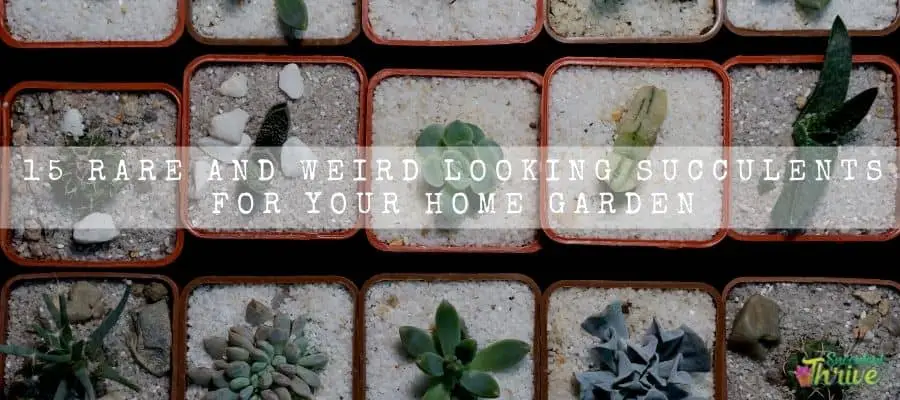
Are all succulents rare?
Not all succulents are rare. There are succulents which you could find easily while on the other hand, there are some succulents which you cannot find more often.
it is sometimes difficult to care for rare and weird looking succulents. Usually, it is difficult to grow rare succulents and their rooting also does not take place easily.
They do not make seeds easily and propagation is also hard. Below are some of the rare and weird looking succulents in the world.
Living Stones (Lithops dorotheae)
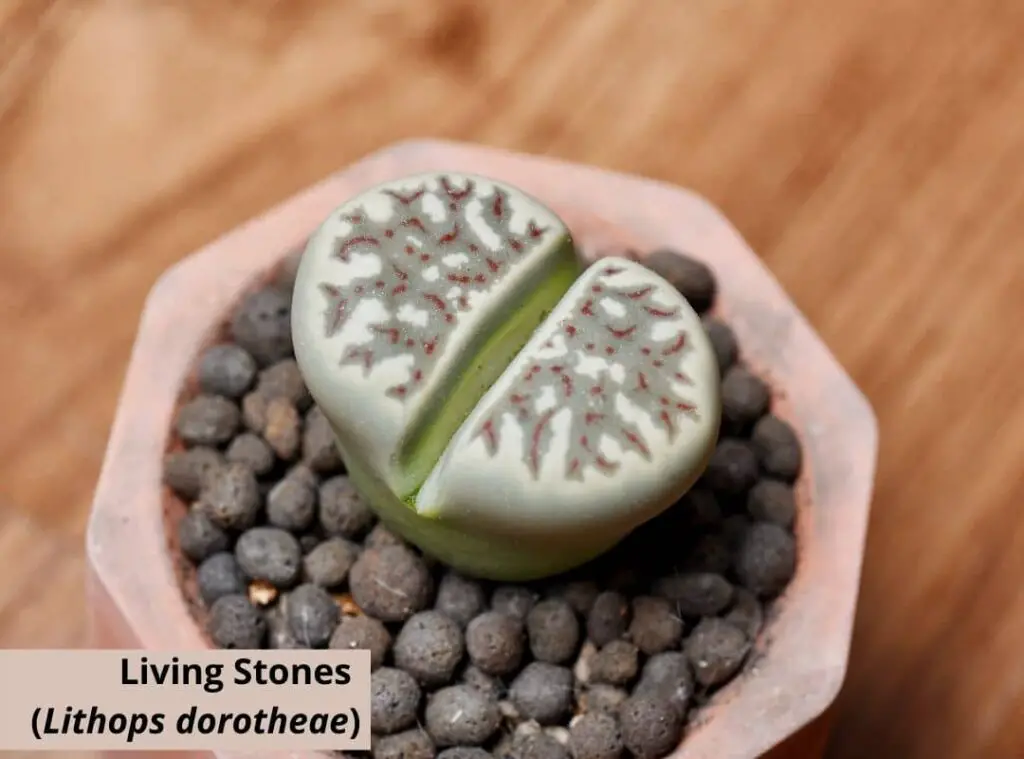
These plants are endemic to Africa. They usually comprise two fleshy chubby leaves with a tiny stem part above the soil.
You could find most of the stem and the long roots under the soil. During spring, older leaves wither and ultimately, they could fall off.
When they bloom, their flowers would form between the leaves during fall or in winter. When they grow to their fullest potential, they will be about 0.5-2 inches in height and in width too.
Strings of Dolphins (Senecio Peregrinus)
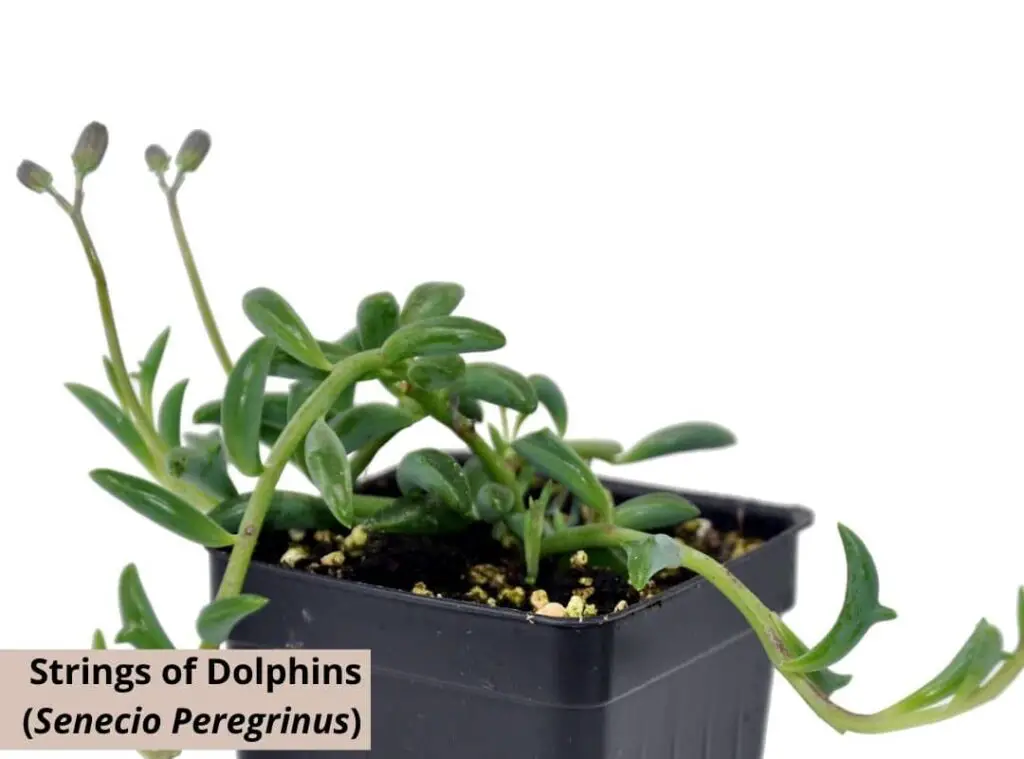
They are native to South Africa. Dolphin succulent leaves are chubby and fleshy, and they look like dolphins.
They look exceptional in their appearance and in addition to that they contain a leaf window which is translucent too.
They usually bloom with composite blooms which are formed from many mini flowers. Moreover, they petals cluster in a sphere form and make a pompom of a bloom.
They have a fantastic cinnamon scent.
Echeveria agavoides ‘Lipstick’
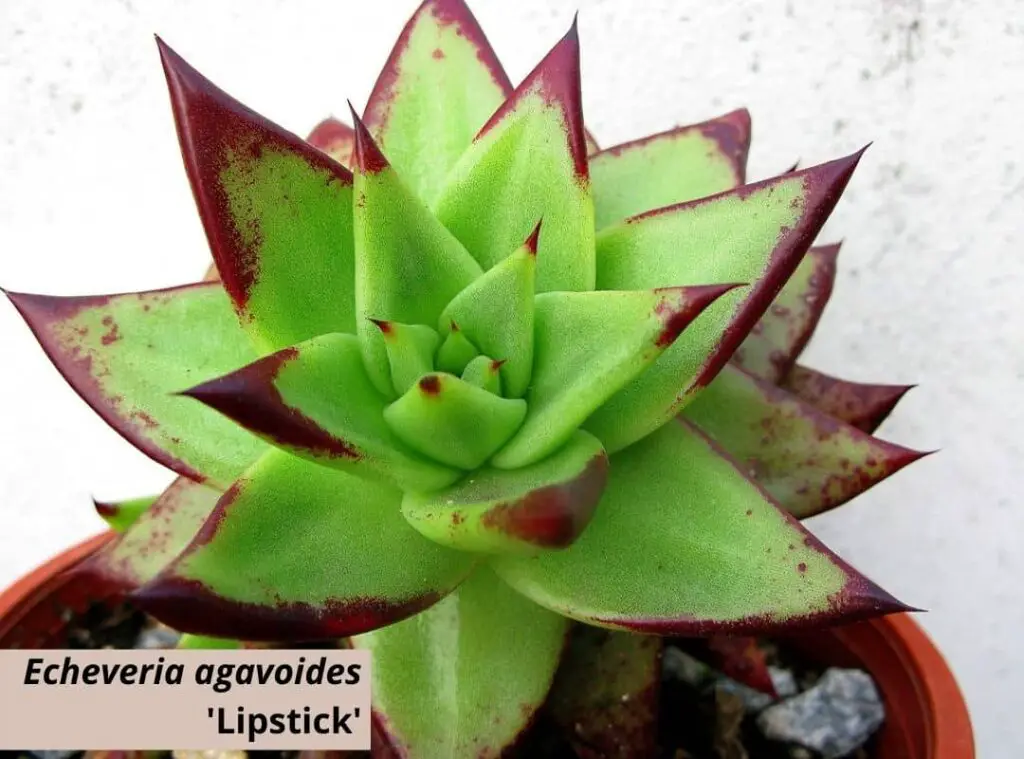
This is an endemic plant in Mexico. They do not usually have stems and they make leaves in rosette forms.
They could rise to 4-4 inches in height and 5-6 inches in width. Their leaves would be bright apple lime green in color, and they look triangular.
Their margins of the leaves would carry red, bronze or even dark brown tips. They could produce 20 inches tall red flowers and they carry a single sided inflorescence. Their flowers will also carry tips with darker colors.
Hoya Hearts (Hoya Kerri)
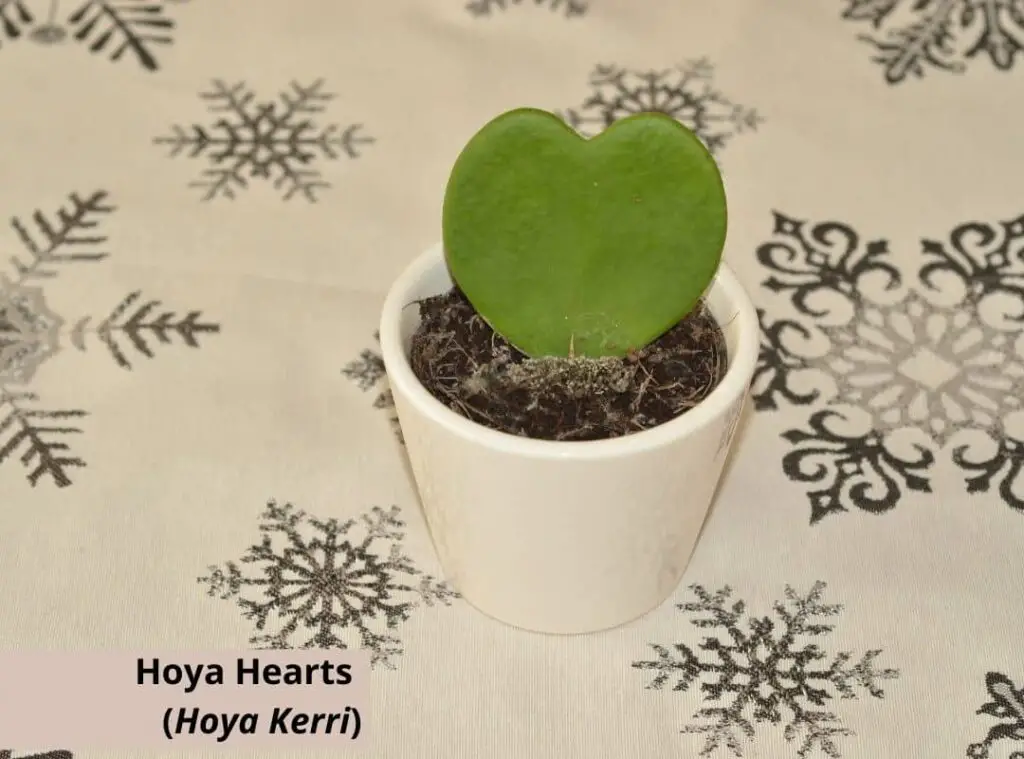
This is a native plant in south east Asia. Hoya Hearts plants consist of several species too. They usually comprise chubby, heart shaped leaves.
When they get mature, their height would be about 13 feet. Their heart leaf could be about 2.3 inches in width. Generally, they contain leaves which you could spot in bright green color.
This is quite popular as a gift which many people tend to give on valentine’s day. It is quite common to spot them as one individual chubby leaf growing in a single pot.
Zig-Zag Cactus (Selenicereus anthonyanus)
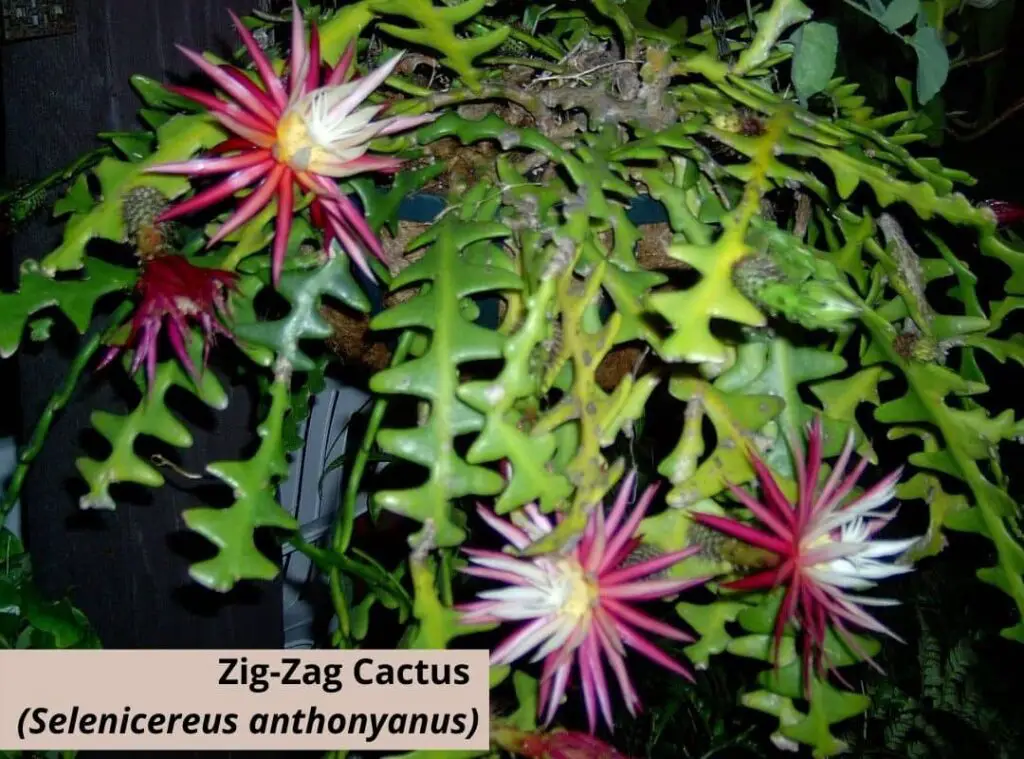
This plant is native to Mexico. They comprise of flat stems and usually grow in a zigzag manner. Hence why they have inherited this common name.
when they are fully grown, they will be about 2-3 feet widespread. Many people grow this as an indoor plant.
This does not have any leaves and their stem would be green. Many people mistake their stem for leaves. They form only a couple of new leaves at the start, and they do not last for too long.
Rose Succulents (Greenovia dodrantalis)
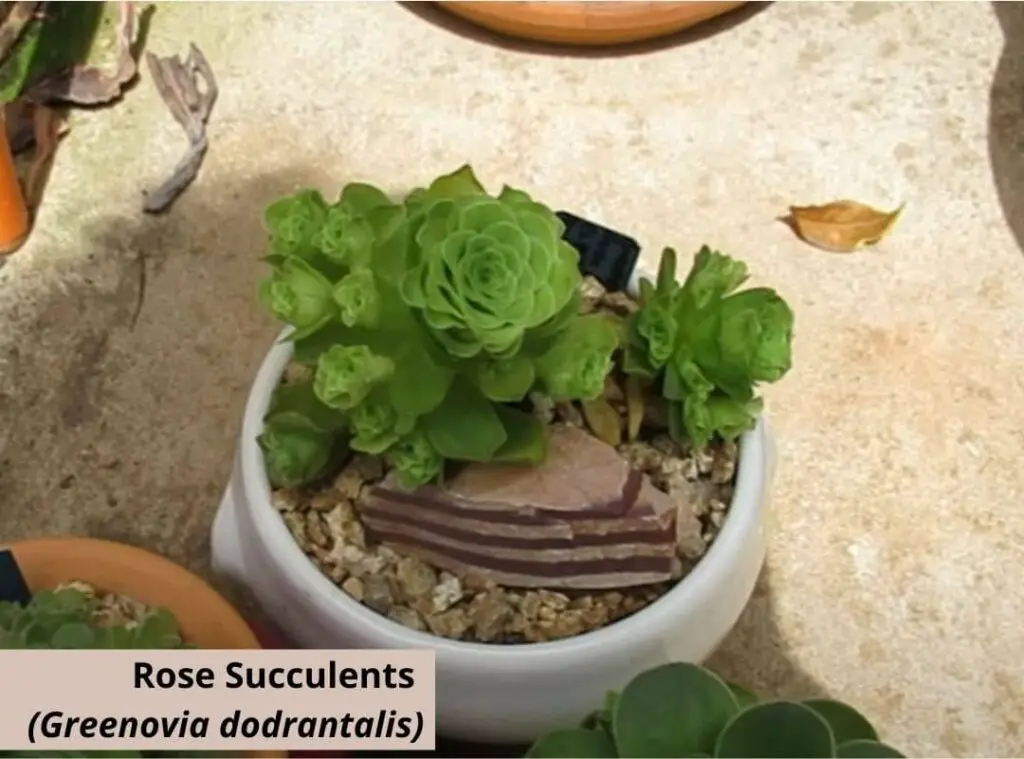
Rose succulents are native to the Canary Islands. They generally tend to produce petals which are round and lay them in an equal pattern of their blooms.
You could spot them generally growing in clusters. When they grow to their fullest, they could rise to 6 inches.
They look similar to regular roses and the only difference is the color as the rose succulents are green.
They usually have chubby fleshy leaves and stems which could conserve water. Their blooming could last for a long time.
Rabbit ear Succulent (Monilaria obconica)
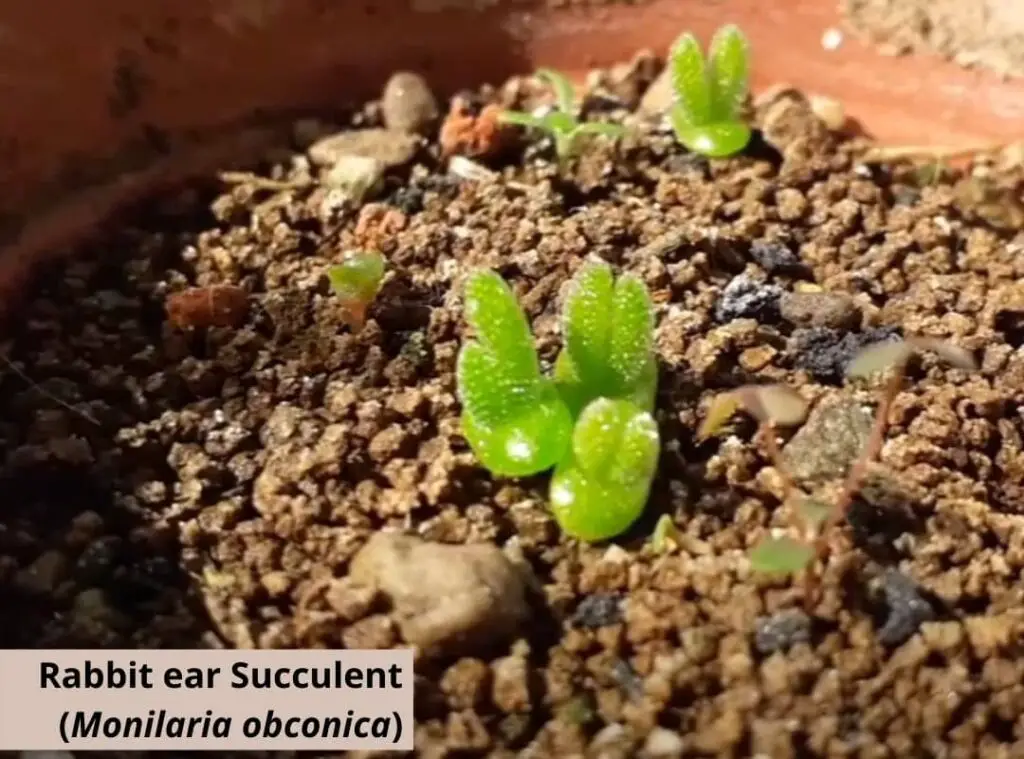
Rabbit ear succulent is an endemic plant in South Africa. They usually tend to grow in clumps.
There are two types falling under rabbit year succulent and they are M. moniliformis and M. obconica.
The most significant factor of them is their uniquely forming head and their pair of leaves which look like bunny ears.
Thus, they have inherited the common names such as Bunny succulent, Bunny ear succulent etc. M. moniliformis is the species which you could widely spot. They have a chubby stem which emerges from the ground.
Haworthia Cooperi
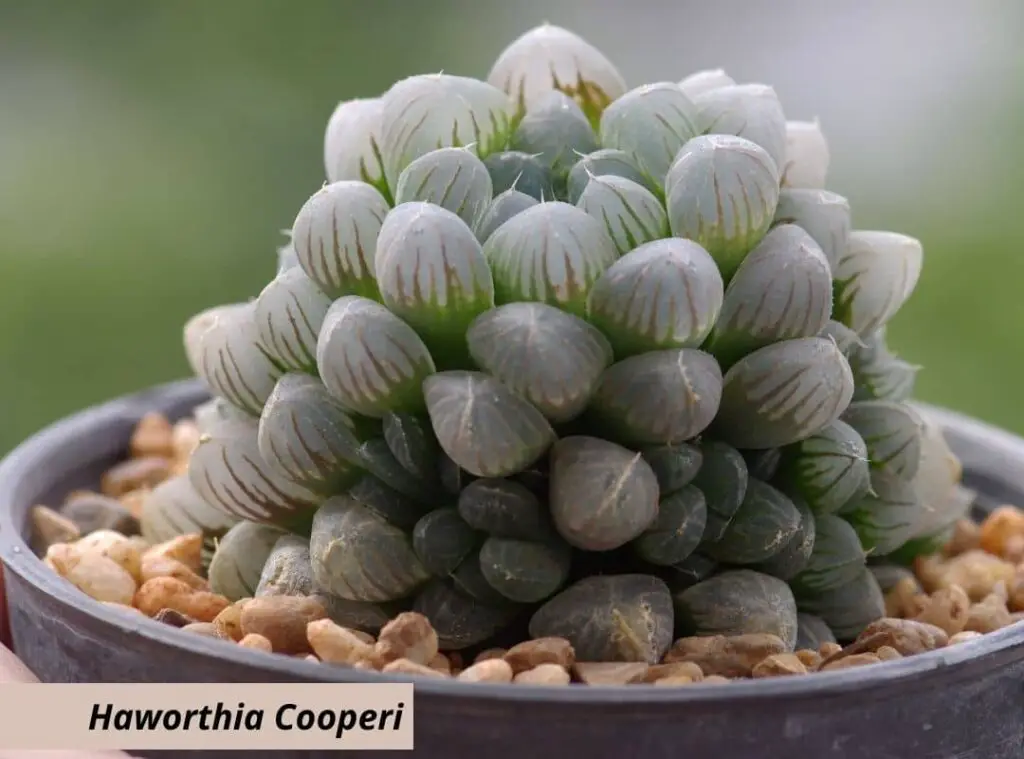
Haworthia Cooperi is native to South Africa. They are relatively slow growing succulents and tend to produce rosettes in clumps.
They contain small fleshy leaves and their color would be light green. The transparent outlook of the leaves gives these plants an interesting appearance.
Their stems also contain transparent tips which is beneficial for the light pass. During summer and in spring they make flowers in white, and they form on a peduncle which could grow up to 12 inches.
Coral Cactus (Euphorbia lactea ‘Cristata’)
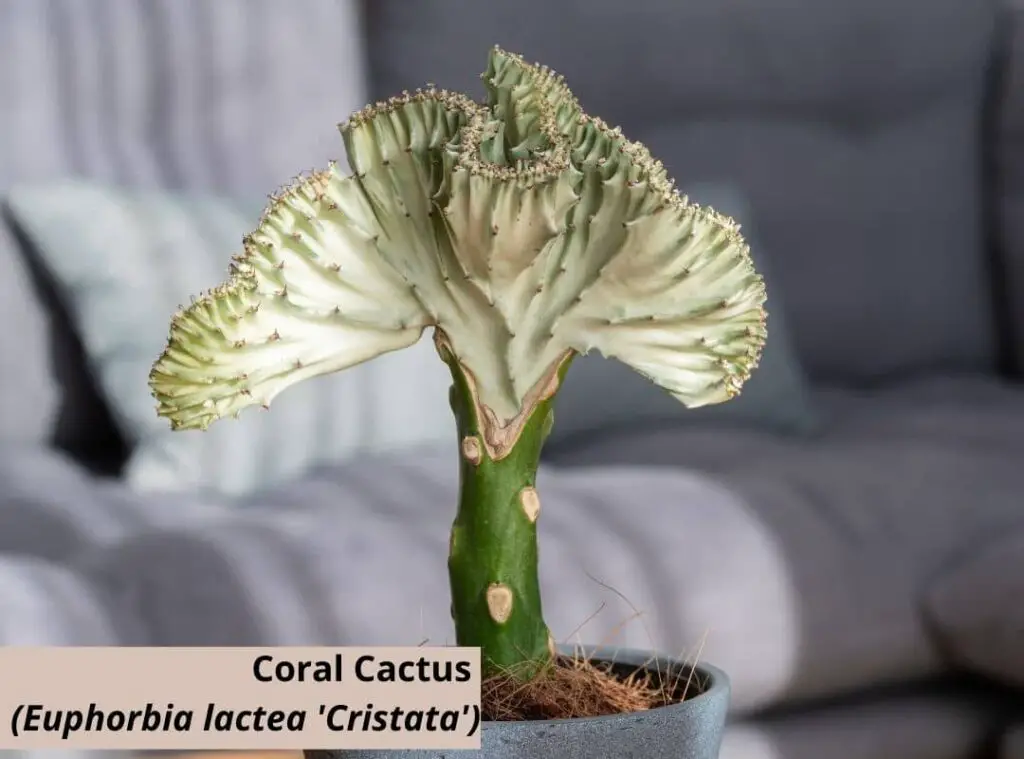
Coral cactus is endemic to Thailand. They look very much like coral reefs. Their leaves would be crinkled, and they would further consist of green, white, yellow tips.
Moreover, they have a stem in green. Many people tend to grow it due to its unique shape. They could blossom with pink or in purple color little flowers.
However, it is very hardly that you could spot them blooming even when they do , it will be only the older plants.
Donkey’s Tail Succulent (Sedum morganianum)
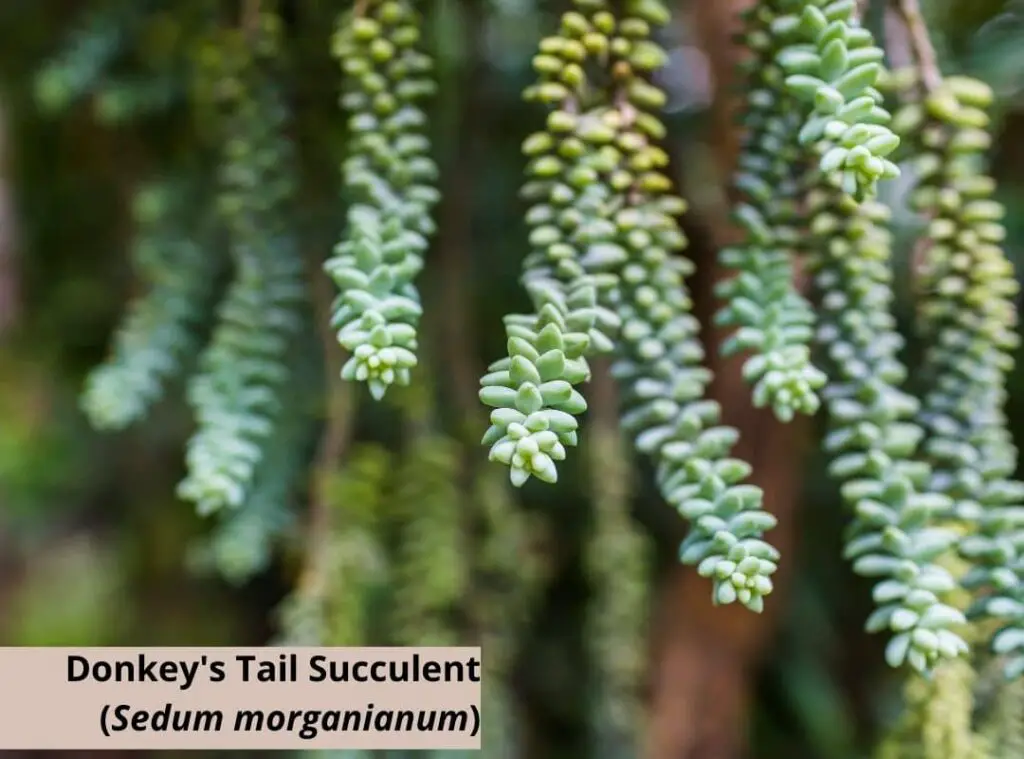
Donkey’s tail succulent is a Mexico native succulent. They are very small in size. Their leaves are quite like other succulents and have fleshy thick leaves.
The colors of the leaves could be either gray or green in color. Their leaves form in an overlapping way.
You need to be cautious when you are handling this plant as chances are that they could drop their leaves if we do not handle them carefully.
They blossom with little flowers and generally form on the stem edges. They do not bloom when you grow them indoors generally.
Lifesaver Plant (Huernia zebrina)
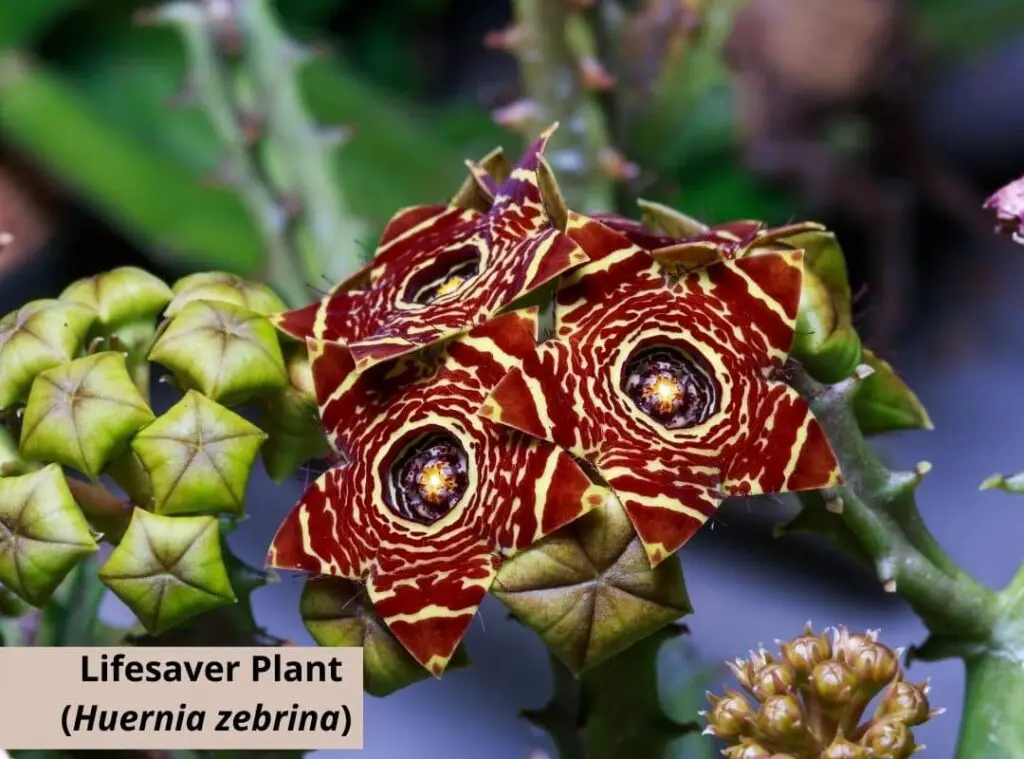
Lifesaver plant is an endemic plant in Southern Africa. This is a tiny perennial succulent which usually tends to form in creeper type.
They are very attractive as they could form some beautiful 5-pointed star shaped flowers along with Zebra stripes.
Further it will consist of a thick center which looks similar to root beer flavored lifesaver. In addition to that, they contain 4 sided stems with soft teeth along the stem margins.
When they get full sunlight, they will get red tips on the plant.
Burger’s Onion (Conophytum Burgeri)
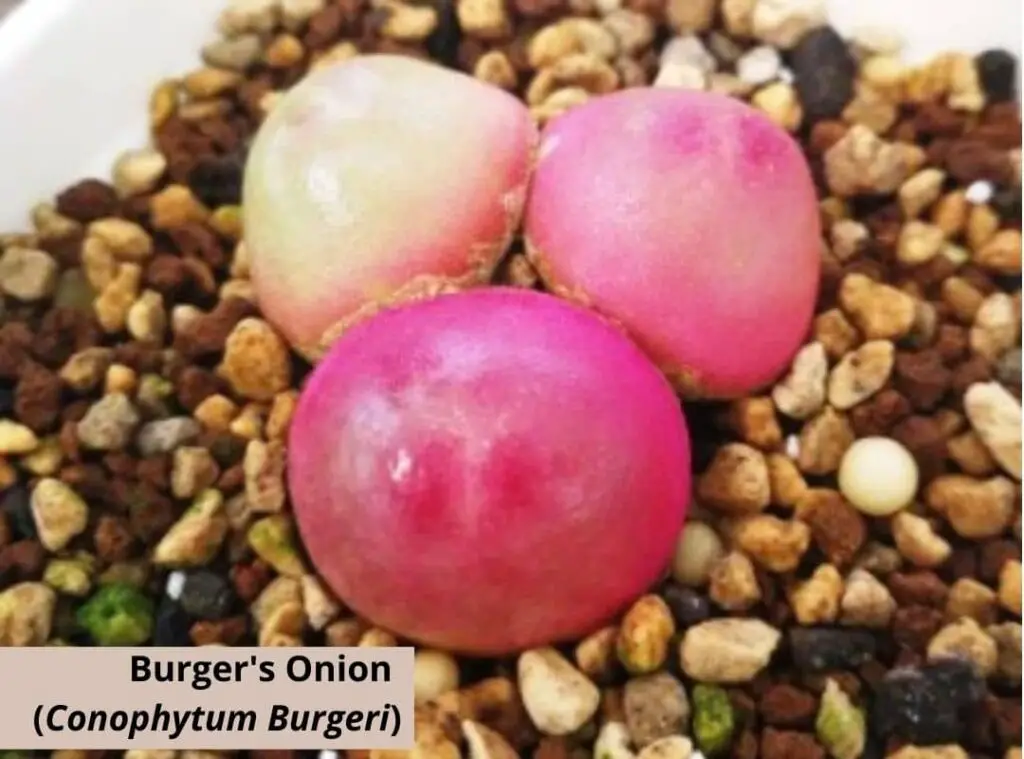
Conophytum burger is an endemic plant in South Africa. Burger’s onion is another common name which you could use to call it.
They usually grow in an onion shape. They would be pale green in color. They could be approximately about 1 inch in diameter when they grow to their fullest.
When it starts blooming, they would be purple. Flowers usually emerge from the succulent center during early fall.
Stone plant (Dinteranthus microspermus)
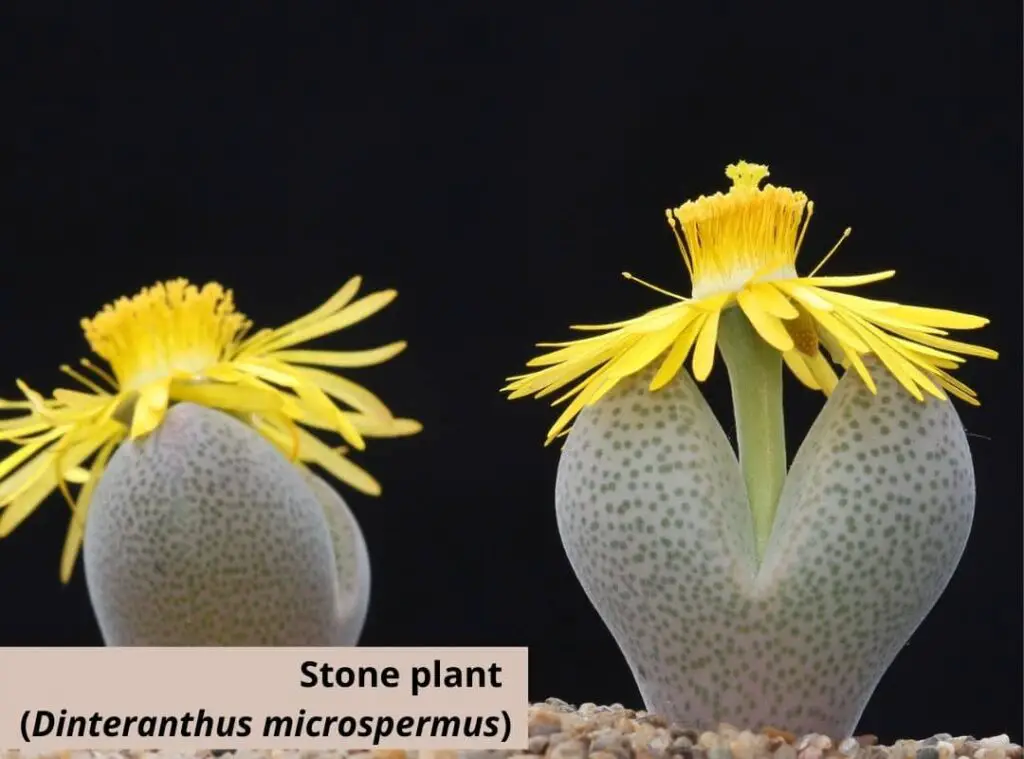
Dinteranthus microspermus is hailing from Namibia and in South Africa and they are native there. Stone plant is the common name of this plant.
when they grow to their fullest, they could rise to about one inch in height. The highlight of these plants is the stray green stem which grows freely with a split in the center.
They usually bloom with yellow flowers.
Gymnocalycium triacanthum
Gymnocalycium triacanthum is native to Argentina. There are several subspecies included in this succulent type. They are as follows.
‘riojense’ subspecies which comprise of 5 radial spines and with white, pink or brown blooms.
‘kozelskyanum’ subspecies which has 3 radial spines. When they bloom flowers will be pink.
‘Paucispinum’ subspecies contain 3 radial spines and they bloom with white flowers.
‘playtygonum’ subspecies contain pearl white fragrant blooms and with 3 spines.
‘piltziorum’ subspecies comprise 3-5 radial spines which erect first and later radiate. Their blooms will be pink.
Baseball plant (Euphorbia obesa)
This is native in central Africa. They would be 20 cm tall and 9 cm wide when they fully grow. They have a single stem without branches forming from it.
Further you could spot the stem in an angled and in grooved manner. Once they get mature, they will tend to get a cylindrical shape. They produce circular shaped blooms.
General succulent care guide
- Ensure that you supply it with the right amount of sunlight. Many succulents wish to have full sunlight for 6 hours and for the rest of the day they would be happy with partial shade.
- Rotating the succulents more often is another way to care for your plants. That will allow the entire plant to get sunlight and it will avoid the etiolation condition.
- Adjust watering based on the seasons. You should ideally increase watering in their active growing season whilst reducing it in their dormancy.
- Water the soil directly and thoroughly until it gets soaked through in the soil and until it drains from the draining holes.
- Try to keep your succulents always clean. You could gently wipe off the dust of the plant for their wellbeing.
- Select a container which has enough draining holes so that excess water will not retain the container.
- Provide them with the right soil to grow. You could ideally use a cactus soil mix or could add substances such as sand, pumice perlite to fasten the drainage of the soil.
- Attend to the bug attacks immediately while using recommended pesticides.
- Feed them lightly during their active growing season which will stimulate their growth.
Read Next: Take 10 Minutes To Choose Pencil Cactus Pot With Correct Guidance
